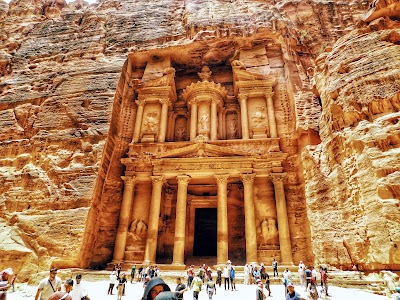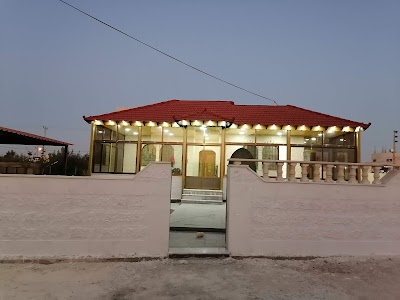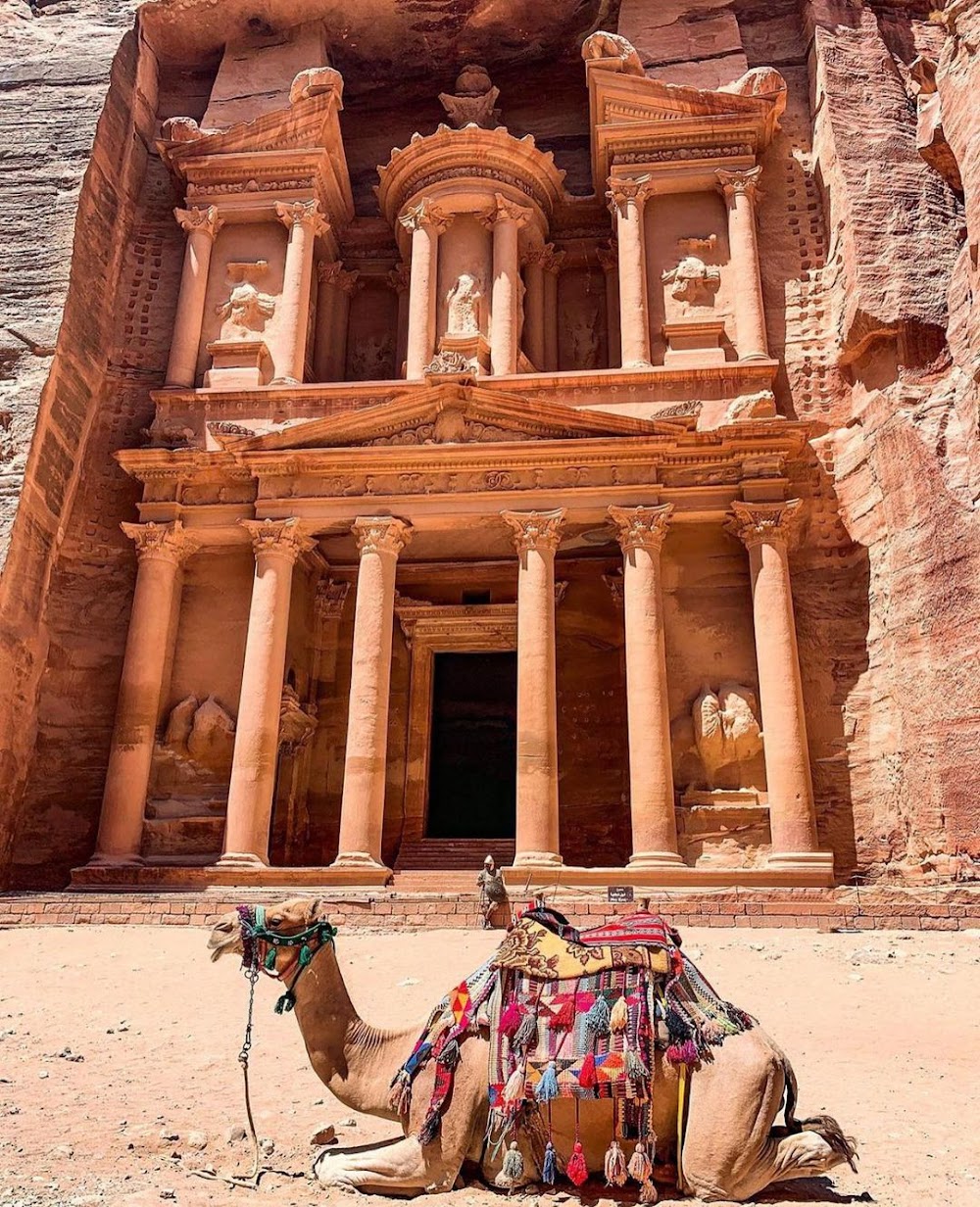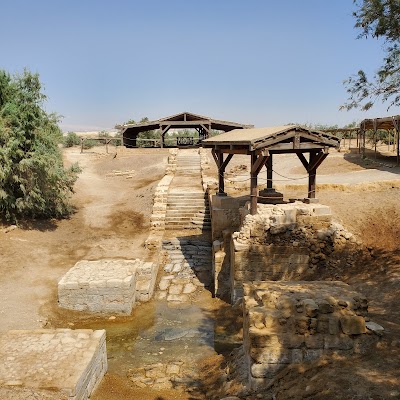Petra (البتراء)
Related Places
Overview
Introduction to Petra
Petra, often hailed as the "Rose City" for its stunning rock-cut architecture, is a historic and archaeological wonder nestled in the Ma'an Governorate of Jordan. This ancient city, once the flourishing capital of the Nabataean Kingdom, was meticulously carved into sheer rock faces by the industrious Nabataeans, an Arab people who settled in this region over 2,000 years ago. Its strategic location along ancient trade routes transformed Petra into a vibrant hub of commerce, connecting Arabian, Egyptian, and Mediterranean cultures.
Iconic Structures: Al-Khazneh
The jewel of Petra is undoubtedly Al-Khazneh, or "The Treasury." This breathtaking facade, originally constructed as a mausoleum in the 1st century AD, welcomes visitors at the end of the Siq—a narrow, winding gorge flanked by towering cliffs. The Treasury's exquisite Hellenistic architecture, highlighted by Corinthian columns and intricate friezes, exemplifies the exceptional craftsmanship of the Nabataeans, leaving an unforgettable impression on all who witness it.
Exploring the Vast Landscape
Beyond Al-Khazneh, Petra reveals an expansive landscape filled with tombs, temples, and ancient living quarters. Among the must-see sites is the Monastery, or "Ad Deir," which demands a rewarding climb of approximately 800 steps. Although larger and somewhat more simplistic in design than the Treasury, the Monastery offers sweeping views of the surrounding valleys, especially stunning at sunset when the golden light bathes its magnificent facade.
Advanced Water Management
Petra's allure extends beyond its architectural wonders to its sophisticated water management system. The Nabataeans were pioneers in hydraulic engineering, skillfully constructing dams, cisterns, and water conduits that ensured a reliable water supply in the arid desert environment. This ingenuity was vital for sustaining the city, transforming Petra into a vital oasis and urban center in antiquity.
A Magical Experience: Petra by Night
One of the most enchanting experiences in Petra is the "Petra by Night" tour. Three nights a week, visitors can stroll through the Siq illuminated by over a thousand candles leading to the Treasury. Under a starlit sky, the soft glow of candlelight adds to the site’s magic, often accompanied by traditional Bedouin music and storytelling that breathe life into the ancient city's rich history.
Rediscovery and Recognition
Petra's rediscovery occurred in 1812 when Swiss explorer Johann Ludwig Burckhardt disguised himself as an Arab and successfully persuaded a guide to lead him to the site. Since then, Petra has fascinated historians, archaeologists, and travelers alike. In 1985, it was designated a UNESCO World Heritage Site, recognized as "one of the most precious cultural properties of man's cultural heritage." Further solidifying its global significance, Petra was named one of the New Seven Wonders of the World in 2007.
Surrounding Landscape
The landscape surrounding Petra is as captivating as the ancient city itself. Rugged mountains and expansive desert plains contribute to the sense of mystery and timelessness. Exploring Petra can take several days, as there are over 800 registered sites within the city, each with its own unique story and hidden secrets.
Optimal Visiting Tips
For those eager to capture the essence of Petra, an early morning visit is highly recommended. The first rays of sunlight bathe the rose-red cliffs in an ethereal glow, creating perfect conditions for photography and quiet contemplation before the crowds arrive. Additionally, hiring a local guide can greatly enhance your experience, providing insights into Petra's rich history and sharing lesser-known anecdotes that are often omitted from guidebooks.
Cultural Connection
Petra is more than just its ancient structures; it serves as a living link to both the past and present. Local Bedouin tribes, who have inhabited the region for generations, enrich the site's cultural tapestry. Their crafts, stories, and warm hospitality offer visitors a unique opportunity to connect more deeply with the spirit of this extraordinary place.
Conclusion
In conclusion, Petra stands as a remarkable testament to human ingenuity, resilience, and artistry. It is a formidable sentinel of history, preserving the legacies of the people who built it and the cultures that thrived within its embrace. Whether you are a passionate historian, an archaeology enthusiast, or simply a curious traveler, Petra promises an unparalleled journey through the annals of time, leaving an indelible mark on the hearts of all who venture through its ancient doors.







